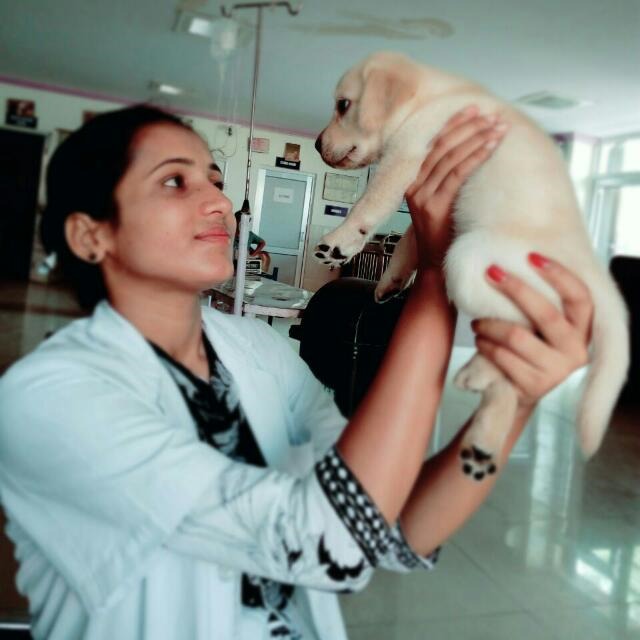By: Dr. Maina Kumari
(Assistant Professor, Department of Veterinary and Animal Husbandry Extension Education, ACVM, Jaipur)
Introduction:
Urea poisoning is one of the most common type of toxicity found in the ruminants especially cattle and buffaloes. Urea and other non-protein nitrogen compounds in the ration of ruminants as an economical replacement of vegetable and animal proteins have been investigated for more than 100 years. Nitrogen is released from urea in the rumen as ammonia and can be used by rumen microflora to synthesise protein in ruminants. This protein then becomes available to the animal through the normal processes of digestion and absorption. If extra urea is consumed than ammonia is absorbed from the rumen into the blood. The ammonia is then converted back to urea in the liver and is then excreted by the kidneys. This pathway can easily be overwhelmed when excess ammonia and urea circulate in the blood, causing poisoning. The deliberate use of urea in cattle feed can be fatal and cause severe farm animal loss. So, farmers should have proper knowledge about the dose and method of urea supplementation in cattle feed and should be cautious enough in this situation.
Causes of urea poisoning:
• Excess consumption of urea in supplemented ration.
• Sudden introduction to high quantities of urea when animals are not adapted to it.
• Improperly mixed or high urea concentration is present in low energy, low protein and high roughage diet.
• Wet supplement containing urea.
• Urea separating out from the supplement after transport.
Doses of urea supplement:
It is recommended that urea should provide no more than 3% of the concentrate ration, or 1% of the total feed intake and no more than one third of the total nitrogen intake should be NPN.
In cattle, 0.3-0.5 g/kg/day is considered to be toxic and 1-1.5 g/kg/day can be fatal.
Signs of urea poisoning:
The clinical signs observed included restlessness, off feed & water, suspension of rumination, subnormal rectal temperature (98.5°F), grinding of the teeth, frothy salivation, nasal discharge, increased respiratory rate (60 per minute), dyspnoea, coughing, increased heart rate (95 per minute), arrhythmia, muscle tremors, tympany, atony of rumen, fluid filled rumen felt on percussion and palpation, severe abdominal pain, incoordination, shivering of muscles, brick red conjunctiva and pulmonary oedema. Often, animals are found dead near the source of the urea supplement.
Diagnosis of urea poisoning:
The most useful diagnostic indicators are the history of access to urea and the signs shown by live, affected animals. Laboratory tests of blood samples are not very helpful and no specific changes are seen at post-mortem examination.
The following are general indicators of urea poisoning:
History of access to urea:
Recent feeding history is important. Cattle become accustomed to metabolising urea, but if they miss out for a couple of days and then are allowed sudden access, or if they consume more than normal, then poisoning can occur.
Laboratory testing of collected blood and rumen fluid immediately after death may indicate urea poisoning.
Post-mortem examination-
A strong presumptive diagnosis of urea toxicity can be made during necropsy soon after death by the distinctive odour of ammonia when opening the rumen and an elevated rumen pH of greater than 7.5-8. Other post mortem lesions may include obvious bloat, pulmonary edema, and epicardial/endocardial haemorrhages.
Treatment of urea poisoning
1. Acetic acid orally was used as an antidote. The antidote for a mature cow suffering from ammonia toxicity is oral administration of 4 L vinegar and this may need to be repeated every 20-30 min until the symptoms disappear. Use of acetic acid much more than 90 min of the ingestion of urea do not appear to have much effect.
2. Antihistamines, antibiotics and corticosteroids should be given to prevent any secondary conditions.
3. Fluid therapy was administered to dilute the toxins in the blood.
4. Diuretic was used to reduce oedema.
5. Stomachic and live yeast extract were given to improve appetite and digestion.
6. Cold water may be administered. It lowers rumen temperature and dilutes reacting media which slows urease activity.
7. A stomach tube can be passed to relieve the bloat and then used to drench the animal with
large volume of cold water.
8. Rumenotomy and removal of rumen contents is suggested for valuable animals.
Best practice followed to prevent urea poisoning:
The urea toxicity problems could easily be prevented through proper employment of scientific knowledge of urea feeding to ruminants.
• Urea should not be fed at a rate exceeding 2%–3% of the concentrate or grain portion of ruminant diets and should be limited to ≤1% of the total diet.
• If cattle have not been previously supplemented, start with pure salt; slowly and then gradually introduce urea supplement – increasing it slowly and gradually to about 0.1g/kg body weight/day. (35-40 g/day for a 400 kg cow).
• Ensure that cattle get regular (daily) access to supplement once supplementation has started.
• If cattle unavoidably miss out on urea supplementation for a couple of days, then restart them at a lower intake level.
• Prevent over-consumption of supplement mix or blocks (e.g. by using salt to regulate intake).
• Feed supplement mixes or blocks under a roof to prevent urea getting wet and dissolving.
• Suspect urea poisoning if cattle are found dead close to the supplement.



